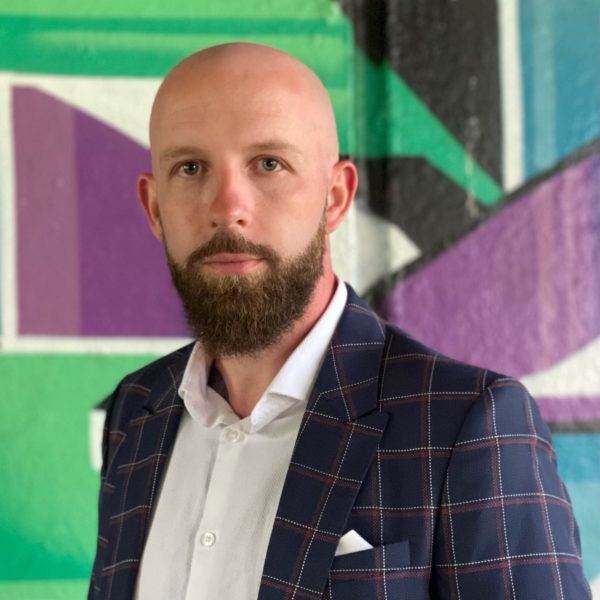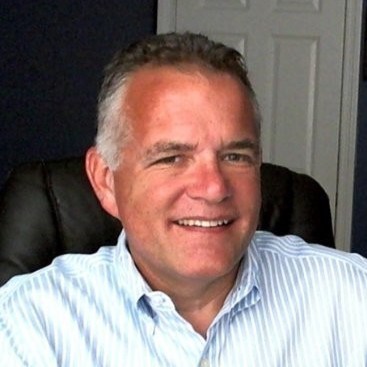Episode 89: Vanessa Metcalf on Demonstrating Impact to Gain Stakeholder Buy-In
2.7K Views | 19 Min Read
Shawnna Sumaoang: Hi, and welcome to the Sales Enablement PRO podcast. I am Shawnna Sumaoang. Sales enablement is a constantly evolving space and we’re here to help professionals stay up to date on the latest trends and best practices so they can be more effective in their jobs.
Today, I’m excited to have Vanessa Metcalf from Top Hat join us. Vanessa, I would love for you to introduce yourself, your role, and your organization to our audience.
Vanessa Metcalf: Awesome. Thank you so much, Shawnna. First of all, I would just like to say, I love what you’re doing. The most unique thing about enablement is the community, so I love that you’re bringing all of these podcasts from different experts to light. I’m super excited to be a part of this.
My name is Vanessa. I lead the enablement function at a company called Top Hat, which is headquartered in Toronto. That’s typically where I reside, but right now I am at a cottage in the Thousand Islands where I’m quarantining and becoming quite the DIY enthusiast.
My role at Top Hat, like I said, is to lead our enablement function. In our case, I know a lot of folks refer to themselves as sales enablement practitioners– we call it revenue enablement because we support more than just sales. So, in total there’s around– I’m losing track– but at this point around 15 different teams across our revenue organization, which supports approximately 150 people or so. On the sales side, that’s everything from SDR all the way up to enterprise, and then on the CS side, we help out with our account managers, and OB, Onboarders, which are responsible for implementation and customer success.
What Top Hat does, just in case anyone is unfamiliar, we’re one of the really fast-growing startups, kind of the unicorns in the Toronto space, so it’s been quite a ride, a very exciting journey to be a part of. Top Hat is an all-in-one teaching app, which empowers educators to easily implement active learning techniques. We sell into higher education, mostly colleges and universities throughout North America.
We see active learning come across in higher-ed in a variety of ways. Sometimes it could be interactive digital textbooks, sometimes it could be interactive assignments for homework, could be polling for in class. Most recently, in the wake of COVID, since a lot of institutions will be online for the fall, we have launched a suite of products which will help with video conferencing and live chat and those sorts of things.
SS: Vanessa, I’m super excited to have you join us, and I’m glad that you enjoy our podcast as well. We’re lucky to have you on here. Now, you mentioned that you’re on the quote-unquote revenue enablement team at Top Hat. In a recent article, you’d mentioned that you try to focus on proactively bringing insights to the business and helping to make strategic decisions.
Now, this can be an area that a lot of sales enablement practitioners struggle with. How have you built out the rapport with your stakeholders to get a seat at the table in that strategic decision-making process?
VM: Yeah, sure, and thanks for reading the article. It was my first stab at publishing on LinkedIn, so I’m excited you came across it. But yes, I would say I am a big proponent of doing my best to deliver insights proactively to the rest of the organization and having my team do the same thing. I personally view that as a pretty important and significant component of any enablement practitioner’s role.
I think the really cool and unique thing about enablement is that it’s kind of like a hub and spoke model, right? A lot of things filter through the enablement team first. So, in some cases that may be that you’re in the position of understanding revenue’s challenges potentially before senior leadership even has started chatting about them. I think that’s the first thing, is when you’re proactive about bringing up these insights, that does gain you a seat at the table, right?
I think the seat at the table is the second thing that I would talk about there is that your senior leadership team, whether that’s VP of sales, your CRO, whoever it is that you may be reporting into, I think that that individual or set of individuals should have just as thorough of an understanding of what’s going on in the enablement world as they do with the new sales pipeline or the customer success world. Regular updates, whether it’s those proactive insights we just talked about, or generally how your initiative pipeline is progressing, can really help just to make sure that they understand what’s going on in your book of business as much as they would in the rest of the revenue organization.
SS: Absolutely. What are some of the challenges that you’ve experienced getting stakeholder buy-in for enablement initiatives specifically? And how have you kind of overcome some of those?
VM: Yeah, I think it’s the million-dollar question, right? I mean, everyone, all of my friends that are in enablement, I’m a part of the sales enablement society, this is the number one thing that we tend to talk about. It comes up in a lot of the conferences that folks go to. For me at Top Hat, I would say this absolutely– I’m not exempt from that. It was a big initial struggle for our enablement function, especially because enablement was pretty young at my company.
At the time I had stepped into the role where it was, you know, maybe six months old, the function, so there was a lot of work to be done. At the time I would say a lot of my stakeholders, which is often frontline leaders, saw a lot of enablement programs as kind of periphery, like enablement was this nice to have thing, but when it came down to actually doing the work, sometimes that was the tough part because it could end up taking a ton of time.
You kind of think about it as like the athletic trainer that makes people do things that they might not want to do, but are good for them. For me, I was pretty sold and passionate about enablement as a field and bringing that to Top Hat. I knew it was going to help us grow and succeed as an organization and lead to better retention and win rates and all that good stuff.
But I needed to make sure that everyone else felt that way, too. I would say some steps I took to overcome it– the first thing I would say is it took me a while to formalize what I should do to solve that problem. For things maybe that have helped me is, is first, just mindset. I come from a sales background, I carried the bag for a while, and then I was a sales manager for a little while too, and what I found super helpful was thinking about running my team and my own enablement initiative pipeline similar as I would to, you know, being an individual contributor or managing a sales team. I would think about all of the initiatives as I would ops in my pipeline. I would think about my buyers as people internally, instead of customers. I think that just helps you to put things in perspective and into terms you already understand, which can help what often feels like unstructured and kind of an ambiguous work, feel a little bit more structured.
Number two is the scope of the work. So, really making sure that anything that you or your team is working on, if you’re leading an enablement function is tied to big business objectives and goals, right? I find a question I’m often asking myself is, ‘Could this thing that I’m doing or someone on my team is doing, could it easily be brought up in a C suite conversation?’ And if not, that’s probably a good place to start. You’re not really going to impress anyone by saying how many certifications you’ve run or how many pieces of content your team has produced, but if those things are connected to some other larger business challenge, then you want to make sure you’re shouting from the rooftops of what that connection is.
The other two tips I would have is, frontline leader relationships matter. A saying I heard a while ago, was thinking about it as deposits in the trust accounts. So really making sure that first of all, you are sourcing the feedback and that when you’re getting it, actually implementing it. It’s really important that enablement doesn’t feel like this siloed thing off to the side on an island. You have to work collaboratively with your frontline leaders, so relationships matter.
Then, always make a habit whenever you’re discussing anything to do with an enablement project, always lead with the ROI. I was finding initially I was challenged by this and my team was challenged by this, where we would talk about an enablement project and we knew the value of it, but unless we were leading with what the business problem was and what our anticipated ROI was, it was very hard for others in the organization to digest. I find by leading with sort of your impact statement – what is the problem we’re trying to solve, and what is the goal we’re trying to hit here – that puts it in terms that people can understand.
SS: Well, that’s a fantastic segue to my next question for you because I think sales enablement practitioners struggle as well with communicating enablement’s impact on the organization. What best practices do you have around doing that with your executive stakeholders?
VM: Yeah. For me, it was very important that enablement’s updates were included in our weekly review of how the new sales side of the business is doing and then the customer success side as well because their success or their failures are very much tied to everything that enablement was doing. This kind of goes back to the point of what we were talking about earlier, Shawnna, of making sure that you do have the seat at the table. I think as soon as you have that, you increase the likelihood that your executive sponsor is going to bring up some enablement program or initiative, or even idea, to other members of the executive or senior leadership team. That can really carry you along the way. Best practices I would have is making sure that you are getting that seat at the table, and you’re a part of regular updates.
If you’re not, brainstorm with your manager or even the chief revenue officer, VP of sales, what can you do to get there? Because ultimately, if there is a formal enablement function at the company, then they’re likely going to want to hear from you, what your updates are and how you’re supporting a lot of big business objectives that the C suite cares about.
I think that’s the number one thing, apart from being proactive with the insights you’re bringing to the organization, is really making sure that your updates aren’t like once a quarter, they’re on a weekly basis, just like everyone else’s would be.
SS: Absolutely. How important is data to this equation, to ensure that you’re demonstrating the impact that enablement has?
VM: I like this question; I’m going to listen to some of your podcasts and see how other people would answer this. To me, maybe this is just the artsy side of my brain, I kind of think of data as more of the, a torch that lights of dark cave. That’s to say, it’s not going to be the only thing you need to make your way through that cave, but really, you’re not going to stand a chance without it.
I always think of the quantitative stuff being not as impactful as it could be without qualitative. I think it can really only tell you so much. And the inverse is true as well, right? If you’re only working with anecdotal or qualitative feedback, that can also be a little bit problematic because it can often be just opinion-based and not based on fact.
I think you want to make sure that– back to the point of being proactive with the data– you want to bring that into your proposals and your enablement programs and your initiatives. You want to bring in the data that no one else is looking at, but you also want to include the data that everyone else is looking at, right? Because again, that goes back to the things that they care about. If the company’s seeing an issue with building top of funnel, or getting some net new meetings, when you’re describing your enablement program of how you’re going to help bridge that gap, you need to make sure you’re including some of those metrics as an example.
SS: Absolutely. Now on that note, and this is the last question on this line, I promise, but what are some of your key metrics for success and how do you use those insights to turn strategy into action?
VM: Yeah. Some of our main metrics are pretty similar to what a lot of other folks would consider their key metrics for success as well. So of course, total billings. Everyone on my team, there has to be a total billings component at the end of the day. That’s what we need to strive towards. We also look at win rates, we look at percentage quota, attainment, consistency of quota, attainment, time to first quota. I like to look at retention as well. In my opinion. I think we can play a pretty big role there. Generally, if folks feel like they’re getting the right career development, they’re more likely to stay.
One that’s a little bit more of a newer metric for us, which was super important for me to include was, customer experience metrics. To that end, what we do is we collect C-Sats (customer satisfaction) across every point of our customer journeys. That could be post-demo with someone on the new sales team, it could be during their onboarding or implementation phase, or it could be a point of renewal to work with our customer success team or account managers. Having that included alongside some of the other metrics I just mentioned, it’s been super important because we want to make sure we’re consistently delivering a positive customer experience, and I think enablement can play a big role there.
In terms of how we use these metrics to turn them into strategic action, we kind of think about these as our North star. I’m always trying to ask myself or folks on my team how everything that we’re working on ties to one of those five key metrics. Are we able to track progress as we go? I think if we don’t have a clear answer on that question, it may mean that we’re prioritizing the wrong thing.
SS: That’s fantastic. I love those and I think you’re spot on. We actually just released our 2020 State of Sales Enablement Report and customer experience has definitely shown through is one of the things that sales enablement professionals are now focusing on even more. So fantastic work, Vanessa. I have one closing question for you, if you don’t mind. You had also recently written an article where you talked about the role that enablement can play in helping organizations navigate at crises. Looking beyond the current crisis, how do you think enablement can be seen as a key lever or continue to be seen as a key lever that organizations should use to evolve their long-term strategies?
VM: In my opinion, I do feel like enablement, I described it in the article as a well that needs to be tapped into now more than ever. I think that is also true of our post-COVID world and whenever that may happen, whatever that may look like. I do think we’re going to need enablement more than ever. I think a lot of businesses have had to pivot, right? A lot of customer bases may have had to change. What that means is that in some cases, sales reps may have had to learn a whole new go-to-market strategy with new value props and positioning statements. They may need to understand the competitive landscape in ways that they didn’t need to before. They may need just to do something as simple as building rapport virtually, versus we used to do a lot of in-person meetings. Things like that, I think are going to require a ton from enablement.
And that’s not going to slow down, right? I think the next year is going to be very interesting for a lot of businesses, and they’re going to need the support that enablement offers to make sure that they’re retaining their top talent and that we can be nimble to keep up with a lot of the changes that we know companies are having to make as a result of everything that’s going on in the world right now.
SS: I couldn’t have said it better myself. Thank you so much, Vanessa, for joining us today, this has been a fantastic conversation.
VM: Of course, I’m so glad to be here and thank you all for everything you do for the enablement community.
SS: Thank you so much. To our audience, thanks for listening. For more insights, tips and expertise from sales enablement leaders, visit salesenablement.pro. If there’s something you’d like to share or a topic you’d like to learn more about, please let us know. We’d love to hear from you.
















